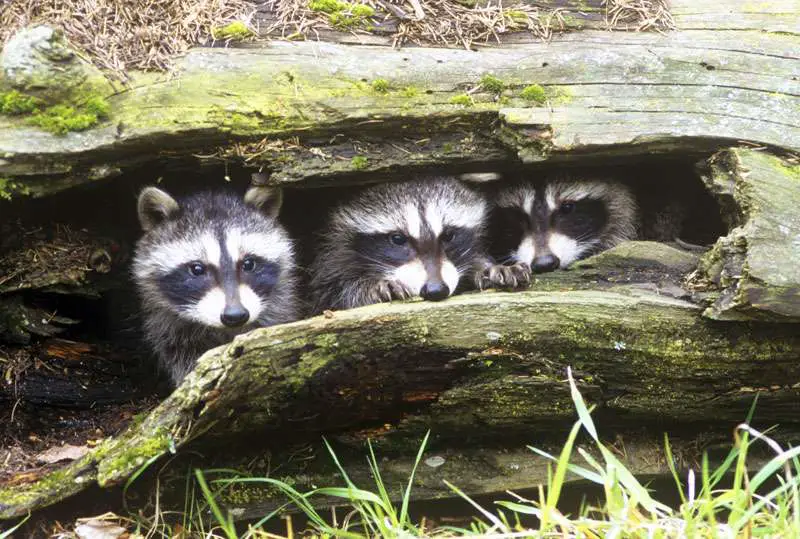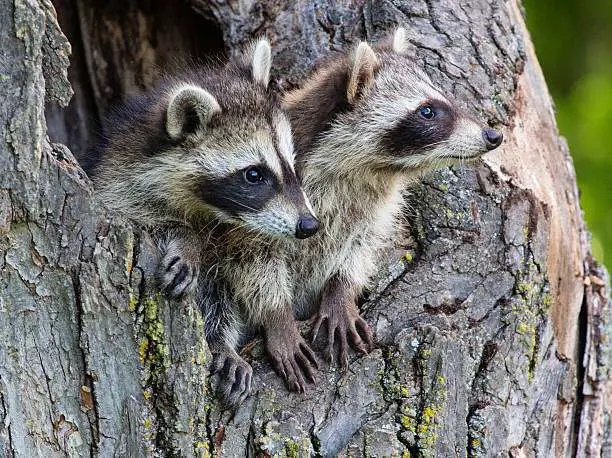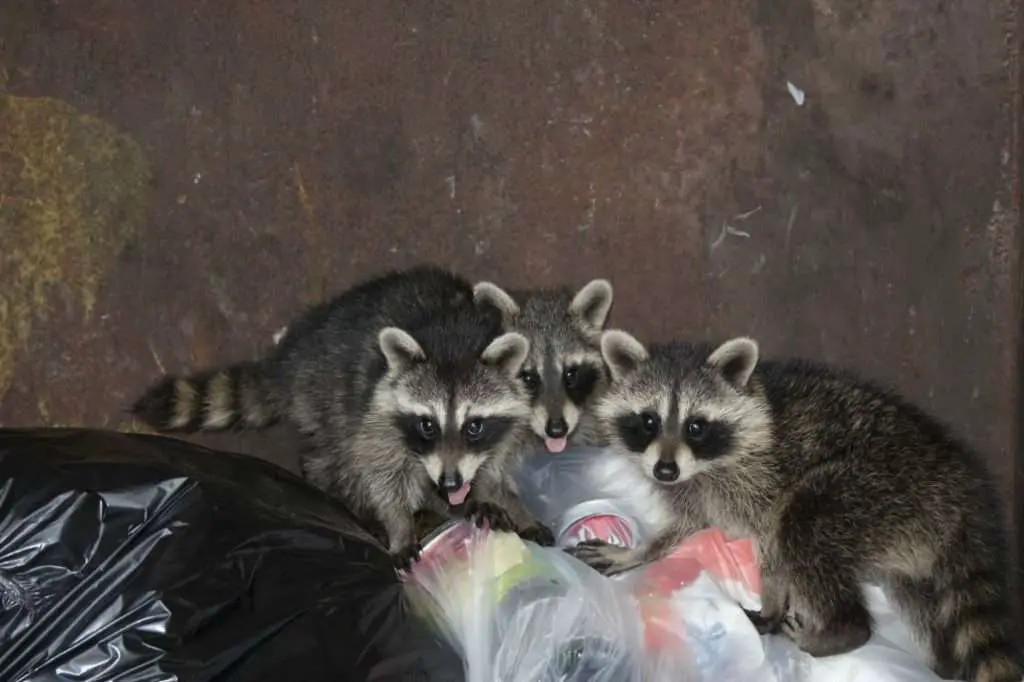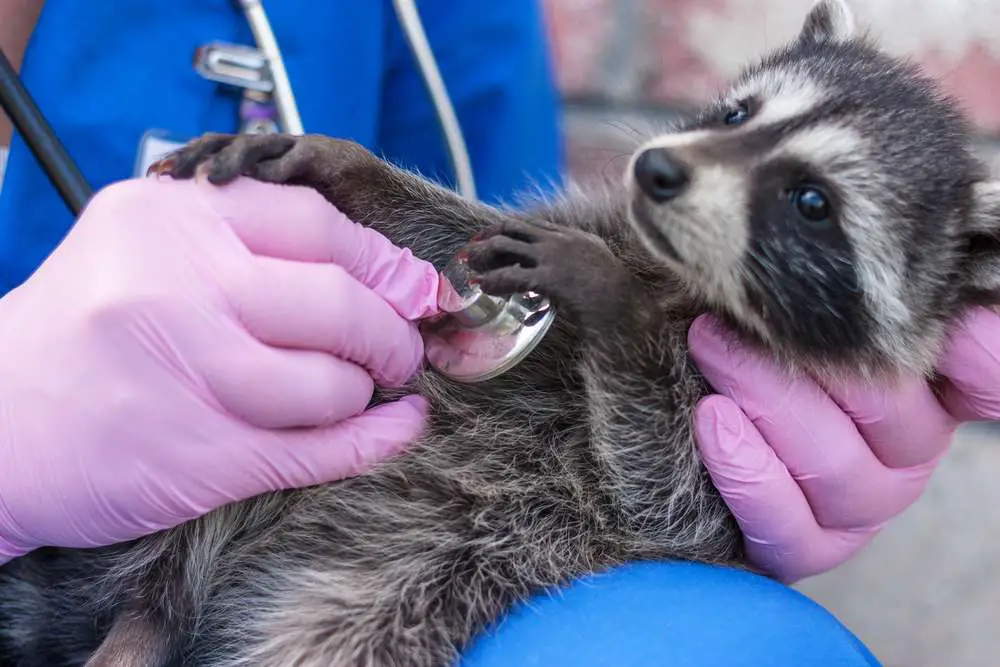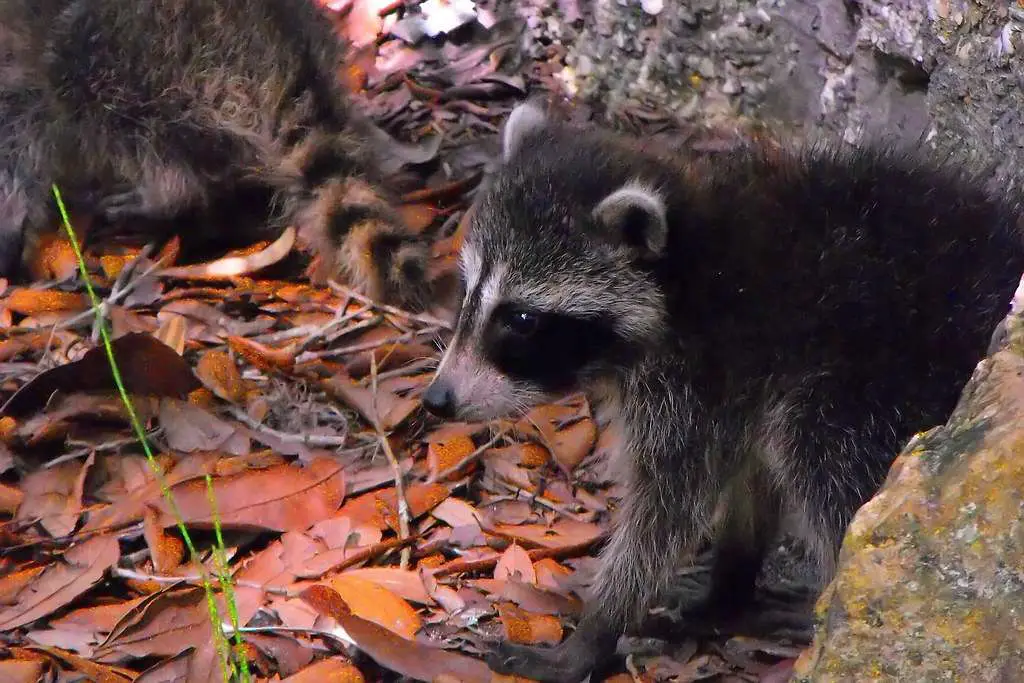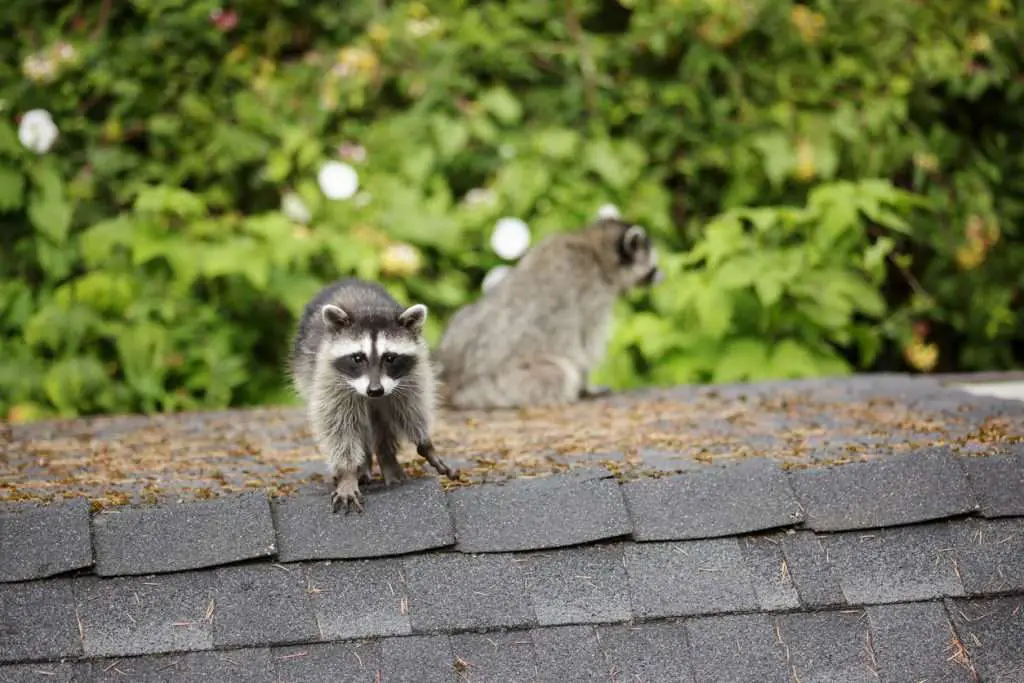var _ckyConfig = {"_ipData":[],"_assetsURL":"https:\/\/reloadyourgear.com\/wp-content\/plugins\/cookie-law-info\/lite\/frontend\/images\/","_publicURL":"https:\/\/reloadyourgear.com","_expiry":"365","_categories":[{"name":"Necessary","slug":"necessary","isNecessary":true,"ccpaDoNotSell":true,"cookies":[],"active":true,"defaultConsent":{"gdpr":true,"ccpa":true}},{"name":"Functional","slug":"functional","isNecessary":false,"ccpaDoNotSell":true,"cookies":[],"active":true,"defaultConsent":{"gdpr":false,"ccpa":false}},{"name":"Analytics","slug":"analytics","isNecessary":false,"ccpaDoNotSell":true,"cookies":[],"active":true,"defaultConsent":{"gdpr":false,"ccpa":false}},{"name":"Performance","slug":"performance","isNecessary":false,"ccpaDoNotSell":true,"cookies":[],"active":true,"defaultConsent":{"gdpr":false,"ccpa":false}},{"name":"Advertisement","slug":"advertisement","isNecessary":false,"ccpaDoNotSell":true,"cookies":[],"active":true,"defaultConsent":{"gdpr":false,"ccpa":false}}],"_activeLaw":"gdpr","_rootDomain":"","_block":"1","_showBanner":"1","_bannerConfig":{"settings":{"type":"box","preferenceCenterType":"popup","position":"bottom-left","applicableLaw":"gdpr"},"behaviours":{"reloadBannerOnAccept":false,"loadAnalyticsByDefault":false,"animations":{"onLoad":"animate","onHide":"sticky"}},"config":{"revisitConsent":{"status":true,"tag":"revisit-consent","position":"bottom-left","meta":{"url":"#"},"styles":{"background-color":"#0056A7"},"elements":{"title":{"type":"text","tag":"revisit-consent-title","status":true,"styles":{"color":"#0056a7"}}}},"preferenceCenter":{"toggle":{"status":true,"tag":"detail-category-toggle","type":"toggle","states":{"active":{"styles":{"background-color":"#1863DC"}},"inactive":{"styles":{"background-color":"#D0D5D2"}}}}},"categoryPreview":{"status":false,"toggle":{"status":true,"tag":"detail-category-preview-toggle","type":"toggle","states":{"active":{"styles":{"background-color":"#1863DC"}},"inactive":{"styles":{"background-color":"#D0D5D2"}}}}},"videoPlaceholder":{"status":true,"styles":{"background-color":"#000000","border-color":"#000000","color":"#ffffff"}},"readMore":{"status":false,"tag":"readmore-button","type":"link","meta":{"noFollow":true,"newTab":true},"styles":{"color":"#1863DC","background-color":"transparent","border-color":"transparent"}},"auditTable":{"status":true},"optOption":{"status":true,"toggle":{"status":true,"tag":"optout-option-toggle","type":"toggle","states":{"active":{"styles":{"background-color":"#1863dc"}},"inactive":{"styles":{"background-color":"#FFFFFF"}}}}}}},"_version":"3.2.0","_logConsent":"1","_tags":[{"tag":"accept-button","styles":{"color":"#FFFFFF","background-color":"#1863DC","border-color":"#1863DC"}},{"tag":"reject-button","styles":{"color":"#1863DC","background-color":"transparent","border-color":"#1863DC"}},{"tag":"settings-button","styles":{"color":"#1863DC","background-color":"transparent","border-color":"#1863DC"}},{"tag":"readmore-button","styles":{"color":"#1863DC","background-color":"transparent","border-color":"transparent"}},{"tag":"donotsell-button","styles":{"color":"#1863DC","background-color":"transparent","border-color":"transparent"}},{"tag":"accept-button","styles":{"color":"#FFFFFF","background-color":"#1863DC","border-color":"#1863DC"}},{"tag":"revisit-consent","styles":{"background-color":"#0056A7"}}],"_shortCodes":[{"key":"cky_readmore","content":"<a href=\"#\" class=\"cky-policy\" aria-label=\"Cookie Policy\" target=\"_blank\" rel=\"noopener\" data-cky-tag=\"readmore-button\">Cookie Policy<\/a>","tag":"readmore-button","status":false,"attributes":{"rel":"nofollow","target":"_blank"}},{"key":"cky_show_desc","content":"<button class=\"cky-show-desc-btn\" data-cky-tag=\"show-desc-button\" aria-label=\"Show more\">Show more<\/button>","tag":"show-desc-button","status":true,"attributes":[]},{"key":"cky_hide_desc","content":"<button class=\"cky-show-desc-btn\" data-cky-tag=\"hide-desc-button\" aria-label=\"Show less\">Show less<\/button>","tag":"hide-desc-button","status":true,"attributes":[]},{"key":"cky_category_toggle_label","content":"[cky_{{status}}_category_label] [cky_preference_{{category_slug}}_title]","tag":"","status":true,"attributes":[]},{"key":"cky_enable_category_label","content":"Enable","tag":"","status":true,"attributes":[]},{"key":"cky_disable_category_label","content":"Disable","tag":"","status":true,"attributes":[]},{"key":"cky_video_placeholder","content":"<div class=\"video-placeholder-normal\" data-cky-tag=\"video-placeholder\" id=\"[UNIQUEID]\"><p class=\"video-placeholder-text-normal\" data-cky-tag=\"placeholder-title\">Please accept cookies to access this content<\/p><\/div>","tag":"","status":true,"attributes":[]},{"key":"cky_enable_optout_label","content":"Enable","tag":"","status":true,"attributes":[]},{"key":"cky_disable_optout_label","content":"Disable","tag":"","status":true,"attributes":[]},{"key":"cky_optout_toggle_label","content":"[cky_{{status}}_optout_label] [cky_optout_option_title]","tag":"","status":true,"attributes":[]},{"key":"cky_optout_option_title","content":"Do Not Sell or Share My Personal Information","tag":"","status":true,"attributes":[]},{"key":"cky_optout_close_label","content":"Close","tag":"","status":true,"attributes":[]}],"_rtl":"","_providersToBlock":[]};
var _ckyStyles = {"css":".cky-overlay{background: #000000; opacity: 0.4; position: fixed; top: 0; left: 0; width: 100%; height: 100%; z-index: 99999999;}.cky-hide{display: none;}.cky-btn-revisit-wrapper{display: flex; align-items: center; justify-content: center; background: #0056a7; width: 45px; height: 45px; border-radius: 50%; position: fixed; z-index: 999999; cursor: pointer;}.cky-revisit-bottom-left{bottom: 15px; left: 15px;}.cky-revisit-bottom-right{bottom: 15px; right: 15px;}.cky-btn-revisit-wrapper .cky-btn-revisit{display: flex; align-items: center; justify-content: center; background: none; border: none; cursor: pointer; position: relative; margin: 0; padding: 0;}.cky-btn-revisit-wrapper .cky-btn-revisit img{max-width: fit-content; margin: 0; height: 30px; width: 30px;}.cky-revisit-bottom-left:hover::before{content: attr(data-tooltip); position: absolute; background: #4e4b66; color: #ffffff; left: calc(100% + 7px); font-size: 12px; line-height: 16px; width: max-content; padding: 4px 8px; border-radius: 4px;}.cky-revisit-bottom-left:hover::after{position: absolute; content: \"\"; border: 5px solid transparent; left: calc(100% + 2px); border-left-width: 0; border-right-color: #4e4b66;}.cky-revisit-bottom-right:hover::before{content: attr(data-tooltip); position: absolute; background: #4e4b66; color: #ffffff; right: calc(100% + 7px); font-size: 12px; line-height: 16px; width: max-content; padding: 4px 8px; border-radius: 4px;}.cky-revisit-bottom-right:hover::after{position: absolute; content: \"\"; border: 5px solid transparent; right: calc(100% + 2px); border-right-width: 0; border-left-color: #4e4b66;}.cky-revisit-hide{display: none;}.cky-consent-container{position: fixed; width: 440px; box-sizing: border-box; z-index: 9999999; border-radius: 6px;}.cky-consent-container .cky-consent-bar{background: #ffffff; border: 1px solid; padding: 20px 26px; box-shadow: 0 -1px 10px 0 #acabab4d; border-radius: 6px;}.cky-box-bottom-left{bottom: 40px; left: 40px;}.cky-box-bottom-right{bottom: 40px; right: 40px;}.cky-box-top-left{top: 40px; left: 40px;}.cky-box-top-right{top: 40px; right: 40px;}.cky-custom-brand-logo-wrapper .cky-custom-brand-logo{width: 100px; height: auto; margin: 0 0 12px 0;}.cky-notice .cky-title{color: #212121; font-weight: 700; font-size: 18px; line-height: 24px; margin: 0 0 12px 0;}.cky-notice-des *,.cky-preference-content-wrapper *,.cky-accordion-header-des *,.cky-gpc-wrapper .cky-gpc-desc *{font-size: 14px;}.cky-notice-des{color: #212121; font-size: 14px; line-height: 24px; font-weight: 400;}.cky-notice-des img{height: 25px; width: 25px;}.cky-consent-bar .cky-notice-des p,.cky-gpc-wrapper .cky-gpc-desc p,.cky-preference-body-wrapper .cky-preference-content-wrapper p,.cky-accordion-header-wrapper .cky-accordion-header-des p,.cky-cookie-des-table li div:last-child p{color: inherit; margin-top: 0; overflow-wrap: break-word;}.cky-notice-des P:last-child,.cky-preference-content-wrapper p:last-child,.cky-cookie-des-table li div:last-child p:last-child,.cky-gpc-wrapper .cky-gpc-desc p:last-child{margin-bottom: 0;}.cky-notice-des a.cky-policy,.cky-notice-des button.cky-policy{font-size: 14px; color: #1863dc; white-space: nowrap; cursor: pointer; background: transparent; border: 1px solid; text-decoration: underline;}.cky-notice-des button.cky-policy{padding: 0;}.cky-notice-des a.cky-policy:focus-visible,.cky-notice-des button.cky-policy:focus-visible,.cky-preference-content-wrapper .cky-show-desc-btn:focus-visible,.cky-accordion-header .cky-accordion-btn:focus-visible,.cky-preference-header .cky-btn-close:focus-visible,.cky-switch input[type=\"checkbox\"]:focus-visible,.cky-footer-wrapper a:focus-visible,.cky-btn:focus-visible{outline: 2px solid #1863dc; outline-offset: 2px;}.cky-btn:focus:not(:focus-visible),.cky-accordion-header .cky-accordion-btn:focus:not(:focus-visible),.cky-preference-content-wrapper .cky-show-desc-btn:focus:not(:focus-visible),.cky-btn-revisit-wrapper .cky-btn-revisit:focus:not(:focus-visible),.cky-preference-header .cky-btn-close:focus:not(:focus-visible),.cky-consent-bar .cky-banner-btn-close:focus:not(:focus-visible){outline: 0;}button.cky-show-desc-btn:not(:hover):not(:active){color: #1863dc; background: transparent;}button.cky-accordion-btn:not(:hover):not(:active),button.cky-banner-btn-close:not(:hover):not(:active),button.cky-btn-revisit:not(:hover):not(:active),button.cky-btn-close:not(:hover):not(:active){background: transparent;}.cky-consent-bar button:hover,.cky-modal.cky-modal-open button:hover,.cky-consent-bar button:focus,.cky-modal.cky-modal-open button:focus{text-decoration: none;}.cky-notice-btn-wrapper{display: flex; justify-content: flex-start; align-items: center; flex-wrap: wrap; margin-top: 16px;}.cky-notice-btn-wrapper .cky-btn{text-shadow: none; box-shadow: none;}.cky-btn{flex: auto; max-width: 100%; font-size: 14px; font-family: inherit; line-height: 24px; padding: 8px; font-weight: 500; margin: 0 8px 0 0; border-radius: 2px; cursor: pointer; text-align: center; text-transform: none; min-height: 0;}.cky-btn:hover{opacity: 0.8;}.cky-btn-customize{color: #1863dc; background: transparent; border: 2px solid #1863dc;}.cky-btn-reject{color: #1863dc; background: transparent; border: 2px solid #1863dc;}.cky-btn-accept{background: #1863dc; color: #ffffff; border: 2px solid #1863dc;}.cky-btn:last-child{margin-right: 0;}@media (max-width: 576px){.cky-box-bottom-left{bottom: 0; left: 0;}.cky-box-bottom-right{bottom: 0; right: 0;}.cky-box-top-left{top: 0; left: 0;}.cky-box-top-right{top: 0; right: 0;}}@media (max-width: 440px){.cky-box-bottom-left, .cky-box-bottom-right, .cky-box-top-left, .cky-box-top-right{width: 100%; max-width: 100%;}.cky-consent-container .cky-consent-bar{padding: 20px 0;}.cky-custom-brand-logo-wrapper, .cky-notice .cky-title, .cky-notice-des, .cky-notice-btn-wrapper{padding: 0 24px;}.cky-notice-des{max-height: 40vh; overflow-y: scroll;}.cky-notice-btn-wrapper{flex-direction: column; margin-top: 0;}.cky-btn{width: 100%; margin: 10px 0 0 0;}.cky-notice-btn-wrapper .cky-btn-customize{order: 2;}.cky-notice-btn-wrapper .cky-btn-reject{order: 3;}.cky-notice-btn-wrapper .cky-btn-accept{order: 1; margin-top: 16px;}}@media (max-width: 352px){.cky-notice .cky-title{font-size: 16px;}.cky-notice-des *{font-size: 12px;}.cky-notice-des, .cky-btn{font-size: 12px;}}.cky-modal.cky-modal-open{display: flex; visibility: visible; -webkit-transform: translate(-50%, -50%); -moz-transform: translate(-50%, -50%); -ms-transform: translate(-50%, -50%); -o-transform: translate(-50%, -50%); transform: translate(-50%, -50%); top: 50%; left: 50%; transition: all 1s ease;}.cky-modal{box-shadow: 0 32px 68px rgba(0, 0, 0, 0.3); margin: 0 auto; position: fixed; max-width: 100%; background: #ffffff; top: 50%; box-sizing: border-box; border-radius: 6px; z-index: 999999999; color: #212121; -webkit-transform: translate(-50%, 100%); -moz-transform: translate(-50%, 100%); -ms-transform: translate(-50%, 100%); -o-transform: translate(-50%, 100%); transform: translate(-50%, 100%); visibility: hidden; transition: all 0s ease;}.cky-preference-center{max-height: 79vh; overflow: hidden; width: 845px; overflow: hidden; flex: 1 1 0; display: flex; flex-direction: column; border-radius: 6px;}.cky-preference-header{display: flex; align-items: center; justify-content: space-between; padding: 22px 24px; border-bottom: 1px solid;}.cky-preference-header .cky-preference-title{font-size: 18px; font-weight: 700; line-height: 24px;}.cky-preference-header .cky-btn-close{margin: 0; cursor: pointer; vertical-align: middle; padding: 0; background: none; border: none; width: auto; height: auto; min-height: 0; line-height: 0; text-shadow: none; box-shadow: none;}.cky-preference-header .cky-btn-close img{margin: 0; height: 10px; width: 10px;}.cky-preference-body-wrapper{padding: 0 24px; flex: 1; overflow: auto; box-sizing: border-box;}.cky-preference-content-wrapper,.cky-gpc-wrapper .cky-gpc-desc{font-size: 14px; line-height: 24px; font-weight: 400; padding: 12px 0;}.cky-preference-content-wrapper{border-bottom: 1px solid;}.cky-preference-content-wrapper img{height: 25px; width: 25px;}.cky-preference-content-wrapper .cky-show-desc-btn{font-size: 14px; font-family: inherit; color: #1863dc; text-decoration: none; line-height: 24px; padding: 0; margin: 0; white-space: nowrap; cursor: pointer; background: transparent; border-color: transparent; text-transform: none; min-height: 0; text-shadow: none; box-shadow: none;}.cky-accordion-wrapper{margin-bottom: 10px;}.cky-accordion{border-bottom: 1px solid;}.cky-accordion:last-child{border-bottom: none;}.cky-accordion .cky-accordion-item{display: flex; margin-top: 10px;}.cky-accordion .cky-accordion-body{display: none;}.cky-accordion.cky-accordion-active .cky-accordion-body{display: block; padding: 0 22px; margin-bottom: 16px;}.cky-accordion-header-wrapper{cursor: pointer; width: 100%;}.cky-accordion-item .cky-accordion-header{display: flex; justify-content: space-between; align-items: center;}.cky-accordion-header .cky-accordion-btn{font-size: 16px; font-family: inherit; color: #212121; line-height: 24px; background: none; border: none; font-weight: 700; padding: 0; margin: 0; cursor: pointer; text-transform: none; min-height: 0; text-shadow: none; box-shadow: none;}.cky-accordion-header .cky-always-active{color: #008000; font-weight: 600; line-height: 24px; font-size: 14px;}.cky-accordion-header-des{font-size: 14px; line-height: 24px; margin: 10px 0 16px 0;}.cky-accordion-chevron{margin-right: 22px; position: relative; cursor: pointer;}.cky-accordion-chevron-hide{display: none;}.cky-accordion .cky-accordion-chevron i::before{content: \"\"; position: absolute; border-right: 1.4px solid; border-bottom: 1.4px solid; border-color: inherit; height: 6px; width: 6px; -webkit-transform: rotate(-45deg); -moz-transform: rotate(-45deg); -ms-transform: rotate(-45deg); -o-transform: rotate(-45deg); transform: rotate(-45deg); transition: all 0.2s ease-in-out; top: 8px;}.cky-accordion.cky-accordion-active .cky-accordion-chevron i::before{-webkit-transform: rotate(45deg); -moz-transform: rotate(45deg); -ms-transform: rotate(45deg); -o-transform: rotate(45deg); transform: rotate(45deg);}.cky-audit-table{background: #f4f4f4; border-radius: 6px;}.cky-audit-table .cky-empty-cookies-text{color: inherit; font-size: 12px; line-height: 24px; margin: 0; padding: 10px;}.cky-audit-table .cky-cookie-des-table{font-size: 12px; line-height: 24px; font-weight: normal; padding: 15px 10px; border-bottom: 1px solid; border-bottom-color: inherit; margin: 0;}.cky-audit-table .cky-cookie-des-table:last-child{border-bottom: none;}.cky-audit-table .cky-cookie-des-table li{list-style-type: none; display: flex; padding: 3px 0;}.cky-audit-table .cky-cookie-des-table li:first-child{padding-top: 0;}.cky-cookie-des-table li div:first-child{width: 100px; font-weight: 600; word-break: break-word; word-wrap: break-word;}.cky-cookie-des-table li div:last-child{flex: 1; word-break: break-word; word-wrap: break-word; margin-left: 8px;}.cky-footer-shadow{display: block; width: 100%; height: 40px; background: linear-gradient(180deg, rgba(255, 255, 255, 0) 0%, #ffffff 100%); position: absolute; bottom: calc(100% - 1px);}.cky-footer-wrapper{position: relative;}.cky-prefrence-btn-wrapper{display: flex; flex-wrap: wrap; align-items: center; justify-content: center; padding: 22px 24px; border-top: 1px solid;}.cky-prefrence-btn-wrapper .cky-btn{flex: auto; max-width: 100%; text-shadow: none; box-shadow: none;}.cky-btn-preferences{color: #1863dc; background: transparent; border: 2px solid #1863dc;}.cky-preference-header,.cky-preference-body-wrapper,.cky-preference-content-wrapper,.cky-accordion-wrapper,.cky-accordion,.cky-accordion-wrapper,.cky-footer-wrapper,.cky-prefrence-btn-wrapper{border-color: inherit;}@media (max-width: 845px){.cky-modal{max-width: calc(100% - 16px);}}@media (max-width: 576px){.cky-modal{max-width: 100%;}.cky-preference-center{max-height: 100vh;}.cky-prefrence-btn-wrapper{flex-direction: column;}.cky-accordion.cky-accordion-active .cky-accordion-body{padding-right: 0;}.cky-prefrence-btn-wrapper .cky-btn{width: 100%; margin: 10px 0 0 0;}.cky-prefrence-btn-wrapper .cky-btn-reject{order: 3;}.cky-prefrence-btn-wrapper .cky-btn-accept{order: 1; margin-top: 0;}.cky-prefrence-btn-wrapper .cky-btn-preferences{order: 2;}}@media (max-width: 425px){.cky-accordion-chevron{margin-right: 15px;}.cky-notice-btn-wrapper{margin-top: 0;}.cky-accordion.cky-accordion-active .cky-accordion-body{padding: 0 15px;}}@media (max-width: 352px){.cky-preference-header .cky-preference-title{font-size: 16px;}.cky-preference-header{padding: 16px 24px;}.cky-preference-content-wrapper *, .cky-accordion-header-des *{font-size: 12px;}.cky-preference-content-wrapper, .cky-preference-content-wrapper .cky-show-more, .cky-accordion-header .cky-always-active, .cky-accordion-header-des, .cky-preference-content-wrapper .cky-show-desc-btn, .cky-notice-des a.cky-policy{font-size: 12px;}.cky-accordion-header .cky-accordion-btn{font-size: 14px;}}.cky-switch{display: flex;}.cky-switch input[type=\"checkbox\"]{position: relative; width: 44px; height: 24px; margin: 0; background: #d0d5d2; -webkit-appearance: none; border-radius: 50px; cursor: pointer; outline: 0; border: none; top: 0;}.cky-switch input[type=\"checkbox\"]:checked{background: #1863dc;}.cky-switch input[type=\"checkbox\"]:before{position: absolute; content: \"\"; height: 20px; width: 20px; left: 2px; bottom: 2px; border-radius: 50%; background-color: white; -webkit-transition: 0.4s; transition: 0.4s; margin: 0;}.cky-switch input[type=\"checkbox\"]:after{display: none;}.cky-switch input[type=\"checkbox\"]:checked:before{-webkit-transform: translateX(20px); -ms-transform: translateX(20px); transform: translateX(20px);}@media (max-width: 425px){.cky-switch input[type=\"checkbox\"]{width: 38px; height: 21px;}.cky-switch input[type=\"checkbox\"]:before{height: 17px; width: 17px;}.cky-switch input[type=\"checkbox\"]:checked:before{-webkit-transform: translateX(17px); -ms-transform: translateX(17px); transform: translateX(17px);}}.cky-consent-bar .cky-banner-btn-close{position: absolute; right: 9px; top: 5px; background: none; border: none; cursor: pointer; padding: 0; margin: 0; min-height: 0; line-height: 0; height: auto; width: auto; text-shadow: none; box-shadow: none;}.cky-consent-bar .cky-banner-btn-close img{height: 9px; width: 9px; margin: 0;}.cky-notice-group{font-size: 14px; line-height: 24px; font-weight: 400; color: #212121;}.cky-notice-btn-wrapper .cky-btn-do-not-sell{font-size: 14px; line-height: 24px; padding: 6px 0; margin: 0; font-weight: 500; background: none; border-radius: 2px; border: none; cursor: pointer; text-align: left; color: #1863dc; background: transparent; border-color: transparent; box-shadow: none; text-shadow: none;}.cky-consent-bar .cky-banner-btn-close:focus-visible,.cky-notice-btn-wrapper .cky-btn-do-not-sell:focus-visible,.cky-opt-out-btn-wrapper .cky-btn:focus-visible,.cky-opt-out-checkbox-wrapper input[type=\"checkbox\"].cky-opt-out-checkbox:focus-visible{outline: 2px solid #1863dc; outline-offset: 2px;}@media (max-width: 440px){.cky-consent-container{width: 100%;}}@media (max-width: 352px){.cky-notice-des a.cky-policy, .cky-notice-btn-wrapper .cky-btn-do-not-sell{font-size: 12px;}}.cky-opt-out-wrapper{padding: 12px 0;}.cky-opt-out-wrapper .cky-opt-out-checkbox-wrapper{display: flex; align-items: center;}.cky-opt-out-checkbox-wrapper .cky-opt-out-checkbox-label{font-size: 16px; font-weight: 700; line-height: 24px; margin: 0 0 0 12px; cursor: pointer;}.cky-opt-out-checkbox-wrapper input[type=\"checkbox\"].cky-opt-out-checkbox{background-color: #ffffff; border: 1px solid black; width: 20px; height: 18.5px; margin: 0; -webkit-appearance: none; position: relative; display: flex; align-items: center; justify-content: center; border-radius: 2px; cursor: pointer;}.cky-opt-out-checkbox-wrapper input[type=\"checkbox\"].cky-opt-out-checkbox:checked{background-color: #1863dc; border: none;}.cky-opt-out-checkbox-wrapper input[type=\"checkbox\"].cky-opt-out-checkbox:checked::after{left: 6px; bottom: 4px; width: 7px; height: 13px; border: solid #ffffff; border-width: 0 3px 3px 0; border-radius: 2px; -webkit-transform: rotate(45deg); -ms-transform: rotate(45deg); transform: rotate(45deg); content: \"\"; position: absolute; box-sizing: border-box;}.cky-opt-out-checkbox-wrapper.cky-disabled .cky-opt-out-checkbox-label,.cky-opt-out-checkbox-wrapper.cky-disabled input[type=\"checkbox\"].cky-opt-out-checkbox{cursor: no-drop;}.cky-gpc-wrapper{margin: 0 0 0 32px;}.cky-footer-wrapper .cky-opt-out-btn-wrapper{display: flex; flex-wrap: wrap; align-items: center; justify-content: center; padding: 22px 24px;}.cky-opt-out-btn-wrapper .cky-btn{flex: auto; max-width: 100%; text-shadow: none; box-shadow: none;}.cky-opt-out-btn-wrapper .cky-btn-cancel{border: 1px solid #dedfe0; background: transparent; color: #858585;}.cky-opt-out-btn-wrapper .cky-btn-confirm{background: #1863dc; color: #ffffff; border: 1px solid #1863dc;}@media (max-width: 352px){.cky-opt-out-checkbox-wrapper .cky-opt-out-checkbox-label{font-size: 14px;}.cky-gpc-wrapper .cky-gpc-desc, .cky-gpc-wrapper .cky-gpc-desc *{font-size: 12px;}.cky-opt-out-checkbox-wrapper input[type=\"checkbox\"].cky-opt-out-checkbox{width: 16px; height: 16px;}.cky-opt-out-checkbox-wrapper input[type=\"checkbox\"].cky-opt-out-checkbox:checked::after{left: 5px; bottom: 4px; width: 3px; height: 9px;}.cky-gpc-wrapper{margin: 0 0 0 28px;}}.video-placeholder-youtube{background-size: 100% 100%; background-position: center; background-repeat: no-repeat; background-color: #b2b0b059; position: relative; display: flex; align-items: center; justify-content: center; max-width: 100%;}.video-placeholder-text-youtube{text-align: center; align-items: center; padding: 10px 16px; background-color: #000000cc; color: #ffffff; border: 1px solid; border-radius: 2px; cursor: pointer;}.video-placeholder-normal{background-image: url(\"\/wp-content\/plugins\/cookie-law-info\/lite\/frontend\/images\/placeholder.svg\"); background-size: 80px; background-position: center; background-repeat: no-repeat; background-color: #b2b0b059; position: relative; display: flex; align-items: flex-end; justify-content: center; max-width: 100%;}.video-placeholder-text-normal{align-items: center; padding: 10px 16px; text-align: center; border: 1px solid; border-radius: 2px; cursor: pointer;}.cky-rtl{direction: rtl; text-align: right;}.cky-rtl .cky-banner-btn-close{left: 9px; right: auto;}.cky-rtl .cky-notice-btn-wrapper .cky-btn:last-child{margin-right: 8px;}.cky-rtl .cky-notice-btn-wrapper .cky-btn:first-child{margin-right: 0;}.cky-rtl .cky-notice-btn-wrapper{margin-left: 0; margin-right: 15px;}.cky-rtl .cky-prefrence-btn-wrapper .cky-btn{margin-right: 8px;}.cky-rtl .cky-prefrence-btn-wrapper .cky-btn:first-child{margin-right: 0;}.cky-rtl .cky-accordion .cky-accordion-chevron i::before{border: none; border-left: 1.4px solid; border-top: 1.4px solid; left: 12px;}.cky-rtl .cky-accordion.cky-accordion-active .cky-accordion-chevron i::before{-webkit-transform: rotate(-135deg); -moz-transform: rotate(-135deg); -ms-transform: rotate(-135deg); -o-transform: rotate(-135deg); transform: rotate(-135deg);}@media (max-width: 768px){.cky-rtl .cky-notice-btn-wrapper{margin-right: 0;}}@media (max-width: 576px){.cky-rtl .cky-notice-btn-wrapper .cky-btn:last-child{margin-right: 0;}.cky-rtl .cky-prefrence-btn-wrapper .cky-btn{margin-right: 0;}.cky-rtl .cky-accordion.cky-accordion-active .cky-accordion-body{padding: 0 22px 0 0;}}@media (max-width: 425px){.cky-rtl .cky-accordion.cky-accordion-active .cky-accordion-body{padding: 0 15px 0 0;}}.cky-rtl .cky-opt-out-btn-wrapper .cky-btn{margin-right: 12px;}.cky-rtl .cky-opt-out-btn-wrapper .cky-btn:first-child{margin-right: 0;}.cky-rtl .cky-opt-out-checkbox-wrapper .cky-opt-out-checkbox-label{margin: 0 12px 0 0;}"};
https://reloadyourgear.com/wp-content/plugins/cookie-law-info/lite/frontend/js/script.min.js
var breeze_prefetch = {"local_url":"https:\/\/reloadyourgear.com","ignore_remote_prefetch":"1","ignore_list":["\/wp-admin\/"]};
https://reloadyourgear.com/wp-content/plugins/breeze/assets/js/js-front-end/breeze-prefetch-links.min.js
https://reloadyourgear.com/wp-includes/js/jquery/jquery.min.js
https://reloadyourgear.com/wp-includes/js/jquery/jquery-migrate.min.js
Skip to content
If you want a quick but concise guide to raccoons, look no further! We’ve answered every important question about them in this article, from how many babies can a raccoon have to their nesting and child-rearing habits!
The raccoon is a common mammal in North America. They used to live in the wild, but they’ve learned to adapt to urban areas and are now widespread throughout cities.
What time of the year do mother raccoons have babies?
Raccoons usually build their dens in hollow trees, ground burrows, rock crevices, or attics. As winter starts, a raccoon’s fur thickens and grows to adapt to the cold. They also eat as much as they can find in late fall as they spend weeks without leaving their dens during winter.
Raccoons start to breed as early as ten months of age. But male raccoons that are less than one-year-old wait until the next year to breed to give way to older males. Male raccoons can mate with more than one female. A baby raccoon is called a kit. And a group of baby raccoons is called a litter.
Depending on the environmental conditions, adult raccoons breed between January to June, sometimes it extends until July if none of the offspring in the litter have survived. If a female doesn’t succeed in kit-bearing during the first estrus (fertility cycle), the next estrus occurs again after four months . This is also another reason why the mating season lasts until June or July.
Raccoon gestation period
A raccoon’s gestation period lasts 63 to 65 days or two months. Most female raccoons give birth from April to May. Females mostly do the work when it comes to nesting and taking care of the babies. Males have no role in the gestation period and kit-rearing.
How do you tell if a raccoon is pregnant?
Most female raccoons start mating and get pregnant at 12 months of age. A pregnant raccoon tends to make scratching noises while building a nest. You can hear these noises if there are denning raccoons in your chimney or your attic.
A pregnant female late in the gestation will appear larger, and that’s really the only way to tell if a raccoon is pregnant without close inspection.
How often do raccoons have babies?
Juvenile Racoons in a Tree In a year
Raccoons only mate and have babies once a year if the female successfully gets pregnant during the first estrus and her kits survive.
In a lifetime
In the wild, a raccoon’s life can last up to 16 years . But since most of them are exposed to humans and predators, most raccoons live less than five years. Most of the causes are hunting, car accidents, predators, malnutrition, and disease.
Because of this, if a female raccoon lives for 5 years, she can only have babies five times in a lifetime at the most.
How many babies can a raccoon have in a litter?
A raccoon litter can have one to seven kits. But most litters consist of four baby raccoons. The size of a litter is primarily affected by the environment and health of the mother.
How to determine a baby raccoon’s age
What does a baby raccoon look like?
A newborn kit usually weighs three to five ounces. It has a faint mask and is lightly furred. Its head will appear bigger than its body and its ears are pressed to the head. At one week old, the pigmented tail rings will become a little visible.
Instead of crying, a kit chatters and whines whenever hungry or cold. At this age, a baby raccoon still can’t stand and support their full weight so they crawl with all four limbs sprawled on the ground.
At 21 days a kit’s eyes will start to open, and the ears will begin to break away from the head. Around this time, a baby raccoon will also start growling or hissing. Most six-week-old kits can properly walk, run and climb. At seven weeks, kits become more active and begin to engage in wrestling, growling, biting, and squealing.
Kits start eating solid foods and traveling with their mother at the age of eight to nine weeks and completely wean at four months old. Mother raccoons accompanied by their kits enjoy a privileged status in the feeding hierarchy, as other raccoons will prioritize and make way for any female with their young.
How long do raccoon babies stay in the nest?
Raccoon babies from the northern areas stay with their mothers for as long as one year and leave once the mother is ready to breed. While kits from the southern areas leave earlier (around fall), but rejoin their clan from time to time to feed and mate.
Will a mother raccoon come back for her babies?
Most raccoons are nocturnal. But mother raccoons who are still nursing their kits instinctively look for food day and night. They leave their babies in the nest for several hours but come back once they’ve found something to eat.
Do baby raccoons stay together?
Yes, kits from the same litter stay together until they are roughly one year old and can forage or hunt for food on their own. Most adult raccoons live on their own and are self-sufficient.
Can baby raccoons have rabies?
Yes, it’s possible for baby raccoons to have rabies. Chances of getting rabies are higher if the mother raccoon is a rabies carrier.
Raccoons belong to the rabies vector species, along with bats, skunks, foxes, and groundhogs. These animals are primary carriers of the rabies virus and do not always show typical symptoms. So some raccoons may look healthy but can be infected without us knowing. The rabies virus can be transmitted to humans by saliva or being bitten by the carrier. That’s why it’s important to call for professional help if you need to remove or rescue raccoons from your vicinity.
How to get rid of nesting raccoons
If you hear crying or purring noises from your chimney or your attic at night, chances are, there’s a mother raccoon with cubs inside your house. Don’t try to remove them by yourself as they may become violent and hurt you. Instead, call for help from the nearest pest control services or wildlife rehabilitator and wait for them before taking action.
Don’t take matters into your own hands and try to poison or kill the raccoons. That’s illegal in most states! Also, if not dealt with properly, dead bodies can attract flies, smell awful, and are hazardous to our health.
If you can tolerate the noises every night, you can also leave the raccoon family alone and wait for them to move to a new place. That usually happens when the kits are eight to nine weeks old.
Final Thoughts
Some people keep domesticated raccoons as pets. But it comes at a price, as raccoons are mischievous in nature, temperamental, and can even carry viral diseases. Finding a veterinarian who specializes in raccoon care can also be difficult. So think twice before getting one as a pet.
Looking for the best hunting gear? Our articles on bow hunting and the best hunting binoculars are great places to start with!
Rate this item:1.00 2.00 3.00 4.00 5.00 Submit Rating
No votes yet.
Post navigation
var astra = {"break_point":"921","isRtl":"","is_scroll_to_id":"","is_scroll_to_top":"","is_header_footer_builder_active":""};
https://reloadyourgear.com/wp-content/themes/astra/assets/js/minified/style.min.js
https://reloadyourgear.com/wp-content/plugins/breeze/assets/js/js-front-end/breeze-lazy-load.min.js
https://reloadyourgear.com/wp-content/plugins/gd-rating-system/js/rating/events.min.js
var gdrts_rating_data = {"url":"https:\/\/reloadyourgear.com\/wp-admin\/admin-ajax.php","nonce":"417c9e5b48","rtl":"","user":"0","handler":"gdrts_live_handler","ajax_error":"console","wp_version":"64"};
https://reloadyourgear.com/wp-content/plugins/gd-rating-system/js/rating/core.min.js
https://reloadyourgear.com/wp-content/plugins/gd-rating-system/js/methods/stars-rating.min.js
/(trident|msie)/i.test(navigator.userAgent)&&document.getElementById&&window.addEventListener&&window.addEventListener("hashchange",function(){var t,e=location.hash.substring(1);/^[A-z0-9_-]+$/.test(e)&&(t=document.getElementById(e))&&(/^(?:a|select|input|button|textarea)$/i.test(t.tagName)||(t.tabIndex=-1),t.focus())},!1);
;(function($, window, document, undefined) {
$(document).ready(function() {
if (typeof window.wp.gdrts.core !== "undefined") {
window.wp.gdrts.core.run();
} else {
if (window.console) {
console.log("INIT ERROR: GD Rating System - JavaScript not initialized properly.");
}
}
});
})(jQuery, window, document);
